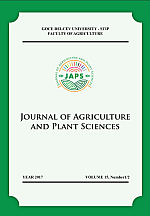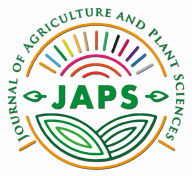COMPARATIVE ANALYSIS OF CAPSAICIN CONTENT IN PEPPERS (Capsicum annuum L.) GROWN IN CONVENTIONAL AND ORGANIC AGRICULTURAL SYSTEMS
Abstract
Capsaicinoids according to their chemical structure are phenethylamine group of alkaloids are produced exclusively in the secondary metabolism of genus Capsicum, fam. Solanaceae. Pepper (Capsicum annuum L.) is economically one of the most important vegetable crops in the Republic of Macedonia. Up to date in the Republic of Macedonia there is no methodical and long-term research in organic production of vegetables. Still there are current debates in broad sense about the advantage of organic production as compared to conventional one in terms of morphology of products and especially their quality characteristics.
The aim of this paper is comparative analysis of capsaicin content in fruit extracts from (Capsicum annuum L.) grown in organic and conventional cultivation systems. Pepper genotypes under study were Strumicka Kapija, Strumicka Veznena, Piran, Zupska Rana, Duga Bela and Kurtovska Kapija. Methanol (≥ 99.9%) was used as capsaicin solvent for extraction of capsaicin from dried pepper fruit material. The determination of capsaicin content was performed by chromatographic analyses with HPLC (High Pressure Liquid Chromatography).
The intellectual property and copyright on the original content of all scientific contributions in the published paper shall remain with the authors. Authors give permission to the JAPS owner to publish the paper. All authors agree to publish the paper under Attribution-NonCommercial-NoDerivatives 4.0 International license (CC BY-NC-ND 4.0).


